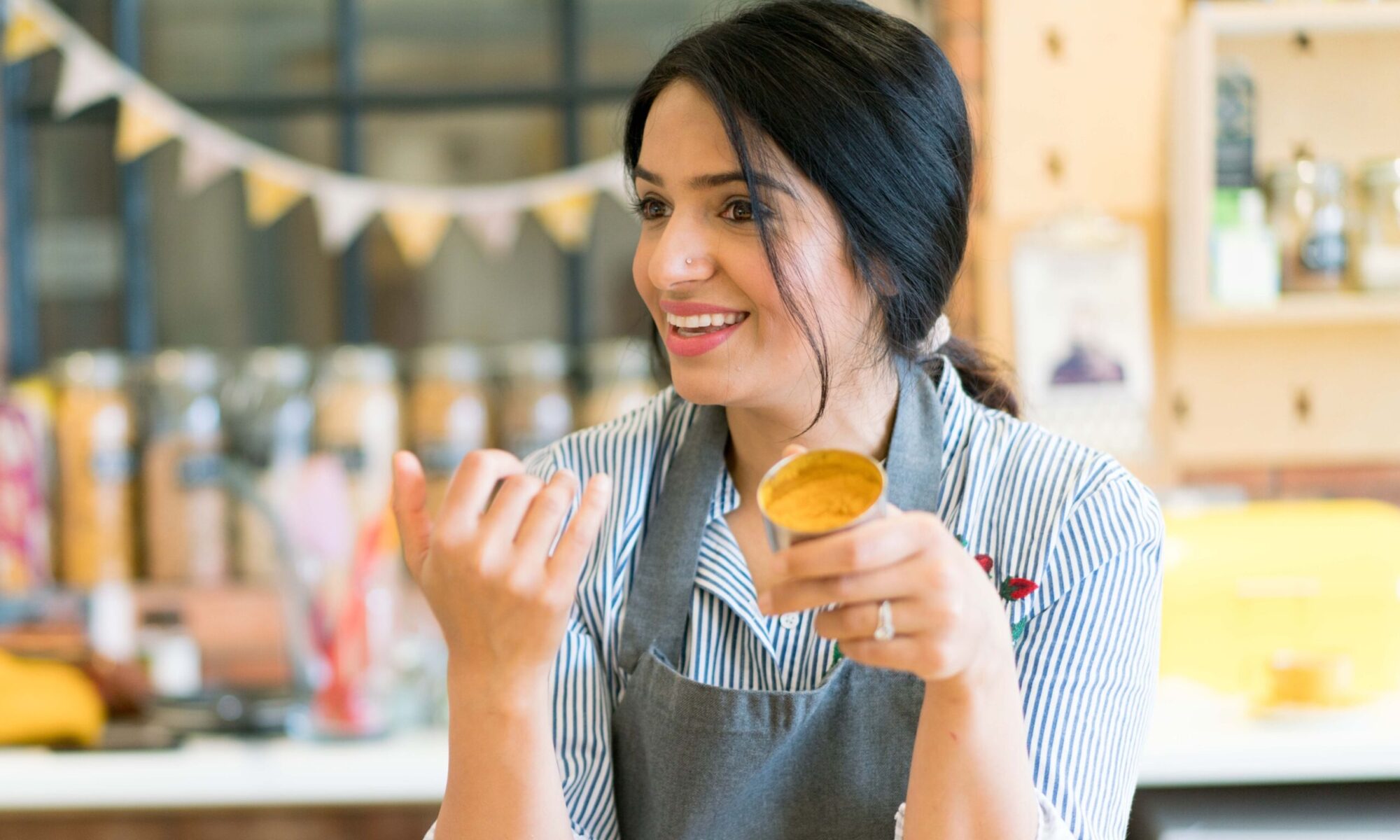
How are we all doing? Ready for another #spiceclubstaple? I’m sharing another favourite of mine – bread pakoras. It’s a dish that completely transforms the staple. It’s also great for using up bread that is possibly heading towards it’s best before date.
If you really want to make these but can’t source bread right now (I am sadly still seeing social media posts of empty supermarket bakery aisles), you can use slices of potatoes or aubergine or even spinach leaves instead!

This recipe uses a batter made from gram flour (a lot of us have this in the cupboard but don’t ever get round to using it!) As it’s made from chickpeas (ie. gluten free friendly), it’s deliciously nutty and is amazing when deep fried. If you don’t deep fry a lot, I suggest that you use a small sauce pan or a small wok so you don’t have to use too much oil. Also a wee tip – once you’re done frying, cool the oil and then drain into a jar. You can fry with this same oil a good 3/4 times again until it begins to change in colour/smell.

Interestingly – bread pakoras are actually a Punjabi speciality. I grew up on them (as did plenty of other Punjabi kids) and we used to dunk them in tomato ketchup and coriander & mint chutney. Crispy & spicy on the outside, fluffy and soft on the inside – these are the pakoras of dreams people.
Enjoy and don’t forget to send me photos of your recreations via social media! Peep the recipe (& the video below!) to see how I made them.

Bread Pakoras
Ingredients
- 4 slices white bread (you can use brown too)
- 1 cup (approx. 90g) gram flour
- 1 tsp salt or according to taste
- ½ tsp turmeric powder
- ½ tsp paprika powder
- ¼ – ½ tsp chilli flakes
- 1 tbsp coriander seeds coarsely crushed
- ¼ tsp mango powder/amchur optional
- ¼ tsp asafoetida powder optional
- Handful fresh coriander finely chopped (optional)
- You wil also need:
You will also need:
- Water
- Oil for deep frying sunflower/vegetable oil works well
Instructions
- Place oil in a pan (a small wok or saucepan works well) until it is about 4” deep and heat on a medium heat setting. Cut the bread slices into square quarters or in triangle halves NB. The quarters are probably easier to handle compared to triangles – if this is your first time making these!).
- Sift the gram flour into a bowl and then add the salt and all of the spices along with the fresh coriander. Gradually add the water and whisk until a smooth yet thick batter forms. It should be the consistency of a thick pancake batter and should be able to coat the back of a spoon. If the batter is too thin, it won’t create a nice layer of coating when fried. (If you do add too much water, you can fix this by adding a little more gram flour – don’t forget to add a little more seasoning if you do this).
- Test the temperature of the oil by placing a small piece of bread /crust into the oil. It should sizzle and come up to the surface within 5 seconds. If it sits at the bottom of the pan, the oil is too cold so continue to heat the oil.
- Keep your bowl of batter right next to the wok with oil. Now, fully dip a piece of bread in the batter ensuring it is covered evenly and carefully place into the hot oil. Repeat with a few more pieces being careful not to overcrowd the pan. (You will need to cook this in batches).
- Fry on medium heat until the pakora becomes golden brown on one side. Flip it over and cook the other side until golden. For extra crispy pakoras, increase temperature to high for the last 45 seconds. It should take 3-4 minutes for the pakoras to fully cook. Using a slotted spoon, remove pakoras from oil and drain well. Once the oil has stopped dripping completely, only then place on kitchen paper. Adjust the temperature of you oil so it is back to a medium heat and then repeat with the remaining bread.
- Enjoy with you tomato ketchup or your favourite dipping sauces!*If you want to get fancy, you can spread your favourite chutney/sauce on one side of the bread pieces before dipping in the batter, for an extra hit of flavour*









